Our buildings

History of our buildings
Our iconic Brutalist buildings were designed as a soaring, light-filled physical manifesto for the education of women.
The architects were Chamberlin, Powell and Bon, who would go on to design the Barbican and Golden Lane Estates in London. They were inspired by the grandeur of Renaissance cathedrals - an influence clearly seen in our Dome dining hall - and harnessed the beauty of moving water, light, lines and shadow to create a masterpiece that remains breathtaking today.
Unlike most Cambridges, we are open to all, daily from 10-6pm. There is no admissions charge. Come to the Porters' Lodge to begin your tour of our buildings, renowned Women's Art Collection and stunnning gardens.
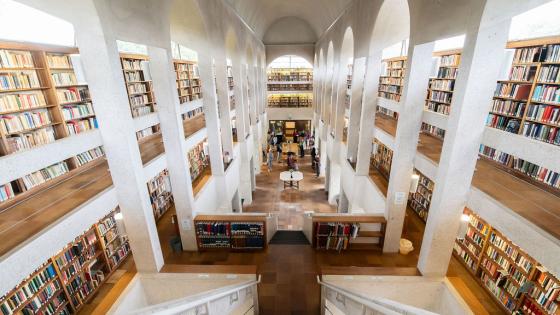
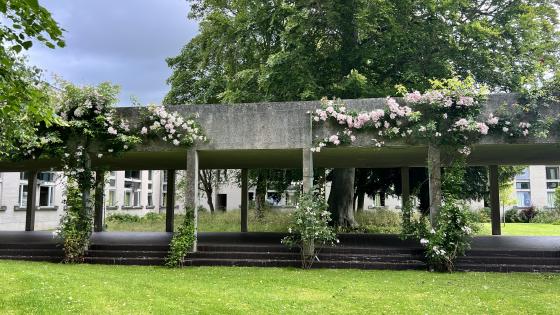
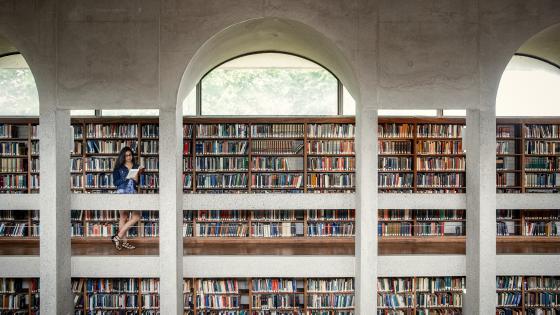
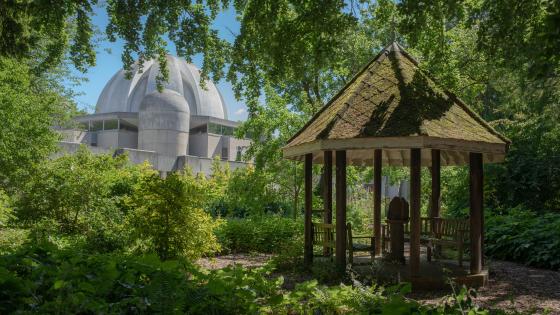
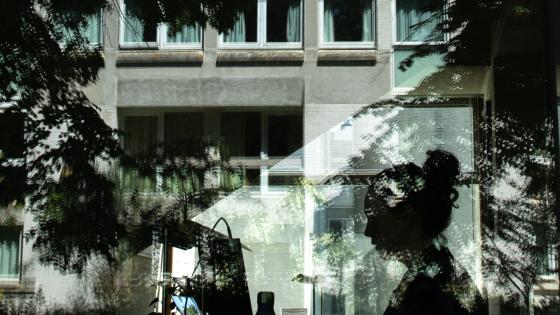
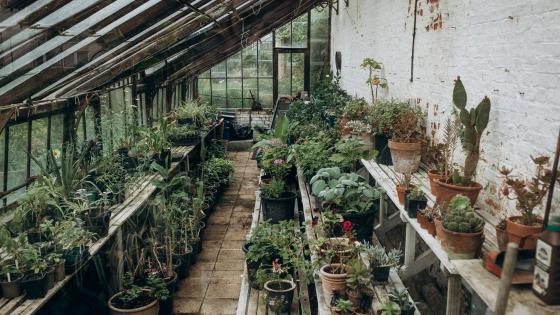
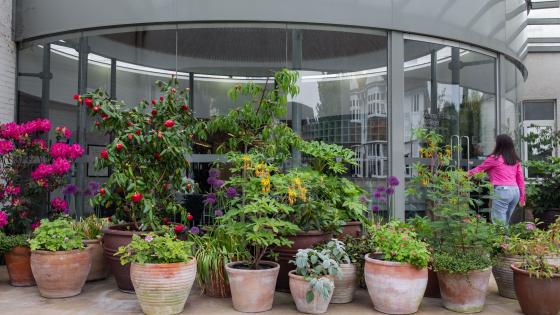
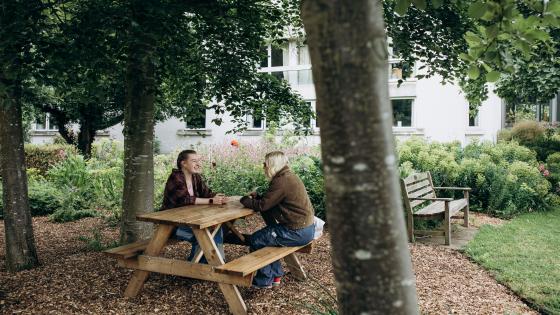
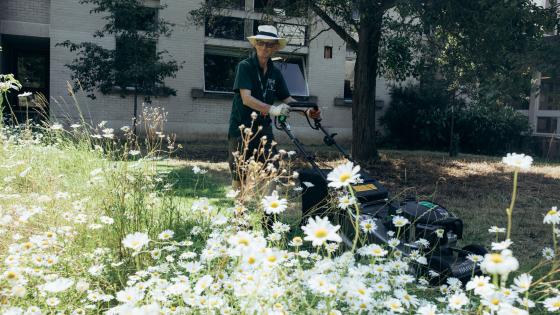
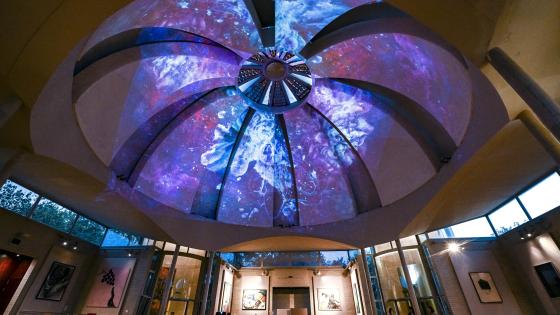
More about our architecture
The original buildings on the site of the Orchard, a large Victorian villa on Huntingdon Road, were designed by Chamberlin, Powell and Bon. The principal areas - the Dining-Hall, the Library and teaching rooms – centre on a sunken Fountain Court, with student accommodation spiralling out from this core. The whole complex is then held together by the Main Walkway, which runs the entire length of the College.
The 1960s buildings were constructed by W.C. French Ltd, who built the original motorway bridges on the M1. The innovative structure and use of materials made it a challenging project. The petals of the Dome are precast concrete, only 4" thick and flanged so that they overlap round each other (with glass panels between). They are held in place by a steel ring at the top and another at the bottom. The large concrete slabs over the bays are supported on nibs protruding from the steel ring, with the whole weight being supported by 8 slender columns in pairs, which are hollow steel tubes and also act as the drains for the roof. None of the weight goes to the walls, as can be seen from the glass clerestory.
The Library has a false clerestory, and the weight of its barrel vault is held on 4 pillars, 2 at either end. The vault is made up of 8 precast sections, originally held together by tensioned steel cables running round the base. One of these subsequently failed and the structure is now held together by steel joists running along the length of the vault.
Phases 1 and 2 of this original design were opened by the Queen Mother in June 1965. These buildings and Fountain Court are listed Grade II* and have won various architectural awards over the years.
Part of the adjoining Grove estate was given to New Hall in 1988, allowing further development of the site by Austin-Smith: Lord. Frank Woods, who had been a junior architect with Chamberlin, Powell and Bon, was a senior partner with Austin-Smith: Lord. Pearl House (formerly New Block) is roughly in the position envisaged for the original Phase 3 buildings, but the College's main entrance was moved and the design for the Porters' Lodge and adjoining meeting rooms was totally new. Planning permission required the design to complement the original buildings externally; they were constructed by Kajima UK Ltd. These buildings were opened by Betty Boothroyd, Speaker of the House of Commons, in June 1995, with the Kaetsu Building (renamed Paula Browne House in May 2021) opening a year later.
The Dome area was extensively refurbished between 2000 and 2002. A temporary kitchen was installed in Orchard Court and the Vivien Stewart Room used as a temporary dining room. Work within the dining hall, kitchen and basement areas was largely invisible from the outside, but the Dome itself was covered by a temporary roof. Also during this time, the College had to address a major structural failure in the Library. The College is extremely grateful to the students, parents, alumnae and friends who helped us to raise the extensive funds needed for both these projects.
Buckingham House opened in 2001. This stunning student accommodation and conference venue includes a 142 seat auditorium which is used for lectures, film festivals and concerts.
Opened in July 2006, Canning & Eliza Fok House provides the College with en-suite rooms for up to 40 graduate students, in groups of 8 rooms per corridor, including shared kitchen/living areas. On the ground floor, the new Graduate Common Room (MCR) has its own kitchen, television and spacious seating area which offers a modern space for social gatherings, relaxing, reading the papers and surfing the internet using the wireless network.